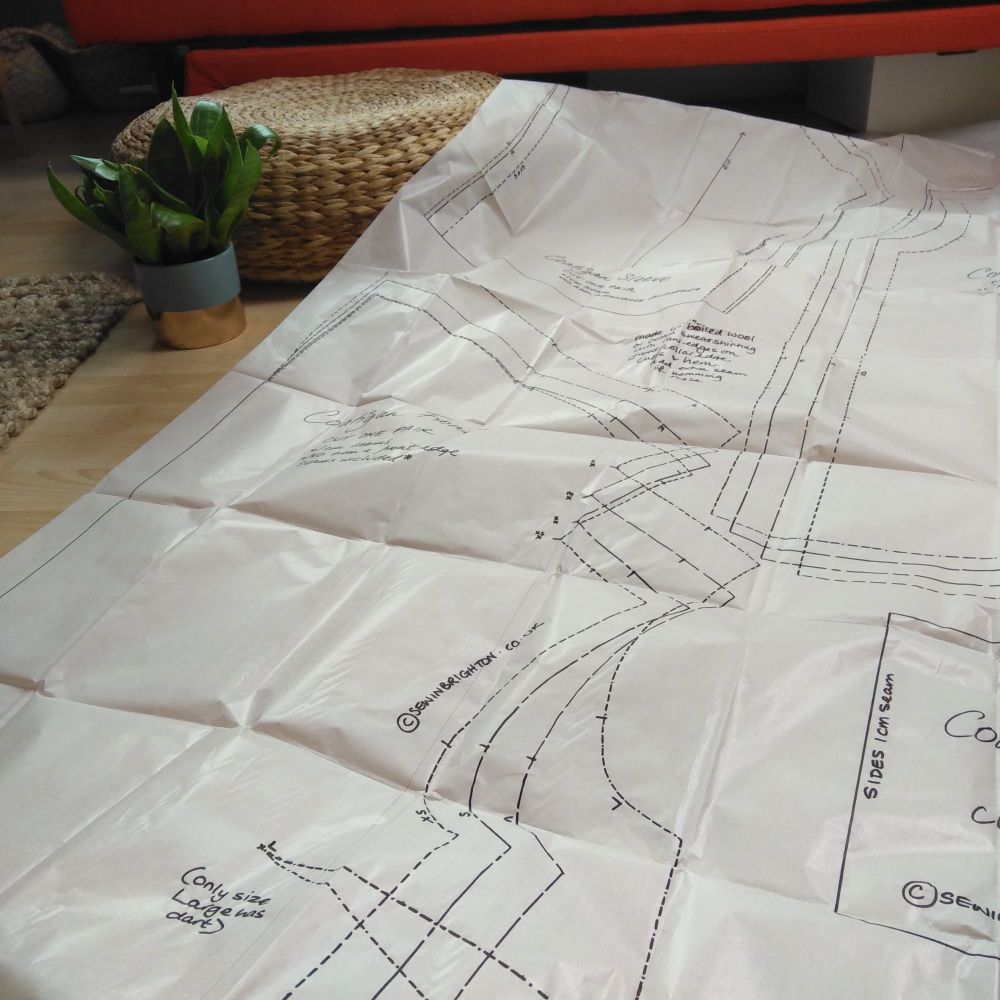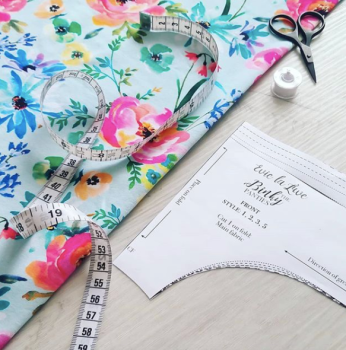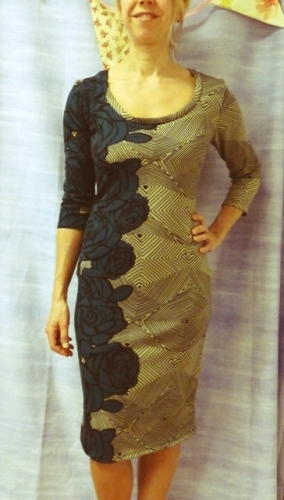How long does it take to learn to sew?
Posted on

Sewing is a skill that can be both enjoyable and practical. The length of time it takes to learn the craft with confidence, is dependent on various factors, including your level of commitment, the complexity of the projects you intend to undertake, and the resources accessible to you.
For beginners, in our experience it usually takes just 2.5-5 hours of a class or course to get acquainted with the basics of using a sewing machine. This includes sewing up an actual useable item, excitingly! The process would involve learning how to wind a bobbin, pull the threads correctly through the sewing machine, thread a needle, operate a sewing machine, adjust the tension between top and bottom thread and sew simple stitches. These basic sewing machine stitches will include:
- sewing straight lines to a set seam allowance (i.e. a specific distance from the edge of the fabric, as determined by the instructions for the item being sewn)
- turning corners
- backstitching to secure your stitch (no need to tie knots once done!) zig-zag stitching to stop edges fraying.
- You may look at a sewing machine and wonder how on earth you're ever going to learn what all those different stitches are and how to use them. The good news is - you don't need to! You could sew for years with just the stitches mentioned above, which you will learn in the first few hours
- Part of the 'learn to sew' process should include cutting out and sewing simple item from start to finish e.g. a tote bag or an overlap back cushion (no zip yet!). It's a great idea for you to start your sewing journey with one these simple projects. It's much more interesting and satisfying to make a useful item than just practising stitches on scraps of fabric! Although you would do that first. Plus you get to see how a pattern is used - very useful for then going on to sew your own clothes. We particularly design our beginner projects so they have directly transferable skills to clothes making, such as hems, seams, zig-zagging edges and more.
To become proficient and confident in sewing, you would need to invest a small amount of regular time and effort into learning the skill. For instance, if you want to sew clothes or make more complex designs, you'll need to learn how to read and follow patterns. You can start with a very simple garment. Drawstring pyjama trousers (after the initial simple project as mentioned above) is ideal. The pattern constists of just two pieces - a front and back and you cut 2 of each. We actually teach you to make your own Pyjama trousers or shorts on day one of our Ultimate Complete Beginners Sewing Day! But first, we introduce you to your craft by sewing your own very simple drawstring sunglasses case.
So really the answer to 'how long does it take to learn to sew', in our case at Sew In Brighton, would be 2.5-5 hours. That's the time it takes to learn the basics and sew up your first item. If you asked 'how long does it take to learn to sew clothing?' We could arguably say 'one day'! At the end of the Ultimate Beginners Sewing Day, you will have sewn your first garment, even though you were a complete beginner to machine sewing at the start of the day. There are many simple pyjama trousers or pyjama short patterns online if you're sewing at home. A simple gathered skirt with an elasticated waist is also a great starting clothes-sewing project due to the lack of fitting on the hips and waist and no zip.
In our experience, if someone is attending weekly sewing classes, they would expect to have learned to sew after a class or two and made a simple garment after 8 or so hours of classes (e.g. the pyjama pants or an elastic waist skirt). Items with zips could be next - a zip purse or a zip A-line skirt. So within ten to twelve 2.5-hour long weekly sewing classes, you could easily have made a cushion or bag, a zip purse, pyjama trousers and a skirt! We have had students make a cushion and then go straight onto a dress, but it is hard work for them. We recommend a dress or short as a 4th or 5th project. If you have your own sewing machine at home, you could sew more items/garments - as you can be set homework by the teacher. Life often gets in the way, though, so many at first rely on the sewing classes to have the space to work on their new hobby, away from home distractions!
At Sew In Brighton, we have three types of learning session formats:
1. Workshops or courses such as Learn to Use a Sewing Machine, the Ultimate Complete Beginners Sewing Day or Replicate Your Clothes where everyone makes the same thing or learns a set skill in a set number of hours/days. These are repeated every 1-6 months
2. Mixed ability and mixed project classes for sewing and clothes making. You work at your own pace on your individual project over as many sessions as you need. Sew one of our free projects or bring your own along. These are held several times a week all year round with no breaks except for Christmas and New Year
3. One-to-one lessons - your teacher is also your dedicated assistant with a keen eye on every step of your progress, so you can get through projects faster and with more accuracy. It is less social than the two options above, but really works for some people where group classes wouldn't so well.
Sewing and clothes-making skills and confidence are usually acquired gradually through consistent practice, experimentation, and guidance. You will make mistakes, especially as you attempt more advanced projects. But the great news is that making errors, having to unpick and re-sew is one of the best ways to learn - you're far more likely to do it the correct way next time!
It is safe to say that the length of time it takes to learn to sew is pretty fast - just a few hours. To sew clothing with proficiency varies considerably from person to person. However, with patience, dedication, and access to the right resources, most people can become confident in their sewing abilities within a few months - or even a few weeks if they are sewing at home as well as taking regular sewing classes. Taking it step by step with the right choice of project progression is a huge help, to make sure you slowly grow in confidence and avoid overwhelm.
Free sewing tips for beginners and beyond: If you would like to learn the basics of pinning, sewing hems, seam allowance, sewing jersey and more, head over to our sewing video tips page here.
We can teach you to sew using a sewing machine in our sewing classroom by the sea in Brighton and Hove! Or help you take your current sewing skills to the next level. Head over to our sewing classes menu here for more details. Don't hesitate to get in touch with any questions or if you have a specific project in mind.
Save 15% on classes by joining our email newsletter here
We email 1-3 x a month with sewing tips, local sewing news, course launches, sales and more
Thanks for reading! Kat - Sew In Brighton Sewing School

Kat Neeser is the founder and owner of Sew In Brighton Sewing School. She has been sewing and making clothes for almost 40 years. Kat's early career from 1993- 2001 (after 4 years at fashion design school) was as a fashion designer and clothing manufacturer in Camden, then Islington in London. She was the founder of the fashion brand Wit & Wisdom (there was no internet then - only letters, phone and fax - so we can't link anything!). The label had a very successful shop in Hyper Hyper on Kensington High Street and a thriving worldwide boutique-store wholesale business. It later had concessions in Top Shop, Miss Selfridge and Debenhams. Kat was happy to leave the fashion industry and has been teaching sewing and pattern cutting joyfully in Brighton and Hove since 2008





























